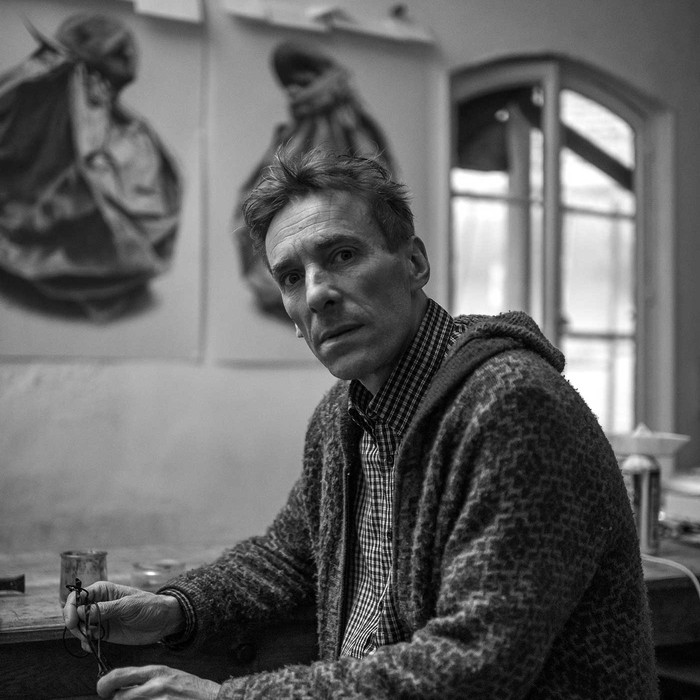
Visiting artist professor
2001 - 2002
Malachi Farrell
Born in 1970 in Dubin (Ireland)
He lives and works in Paris and Malakoff.
Contemporary artists are often accused of not trying to move the spectator. Those who think as much should fine Malachi Farrell's work of interest. Similar to an artist like
Thomas Hirschhorn, the young Irish artist eschews aestheticism
in favor of immediate action on the viewer. Farrell seeks to create works that go to the heart of the essential, and that provide direct access to the reality that inspires
them. He never gets lost in detours or metaphors. The violence developed in his language comes off as an almost instinctive riposte to the violence of mankind, directed against other men (as in Hooliganism, 1997),or against ecological balance and the environment (as in Dying Fish Flag, 1999). Because of its comical nature and its notion of time, the term "sketch" describes his work better than "installation". For emotion does not just arise from his themes, it comes from how his themes are put into form, their conception as a moment of burlesque theater, with the slightly edifying rise and fall of the curtain revealing its popular dimension.
Equipped with microprocessors that he programs himself by recuperating electronic chips from used machines, Malachi Farrell's sculptures are activated by the presence of the viewer. Entering into the field of "I didn't have to be that way," (1994), the calm spectator is suddenly assaulted from all sides: cries and sobs come from a shrubbery bouquet which seems to struggle against its pedestal, while a plume of smoke jets out, then a pile of cut wood collapses without warning before one's eyes. These pranks are all part of Farrell's magic. Just like the anthropomorphic character of the fauna and flora that figure in his works, the effects of surprise inflect the socially engaged artist's agenda with the benign, irresistible tenor of the fable.
